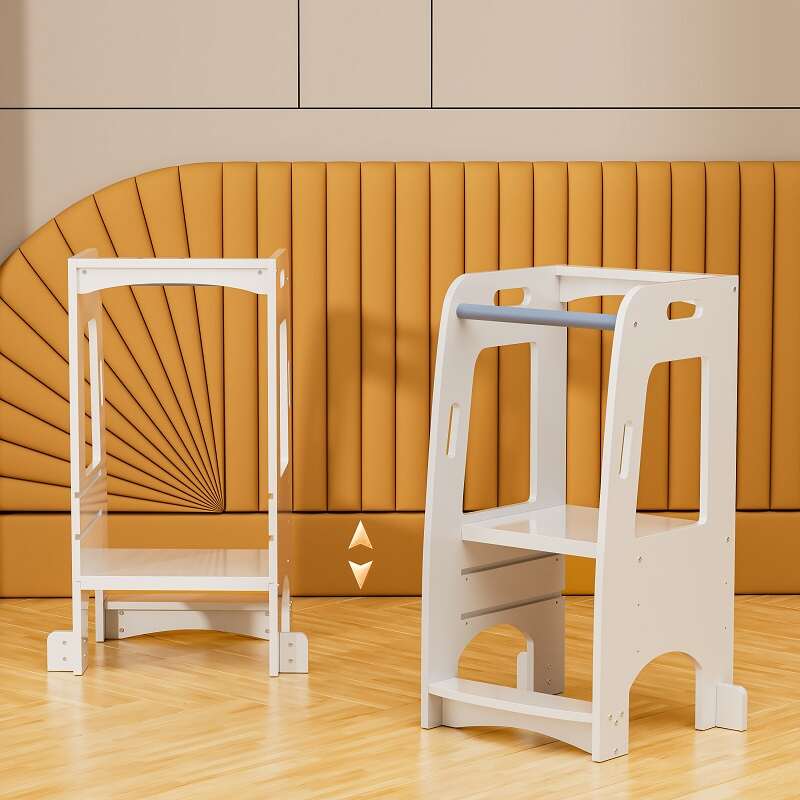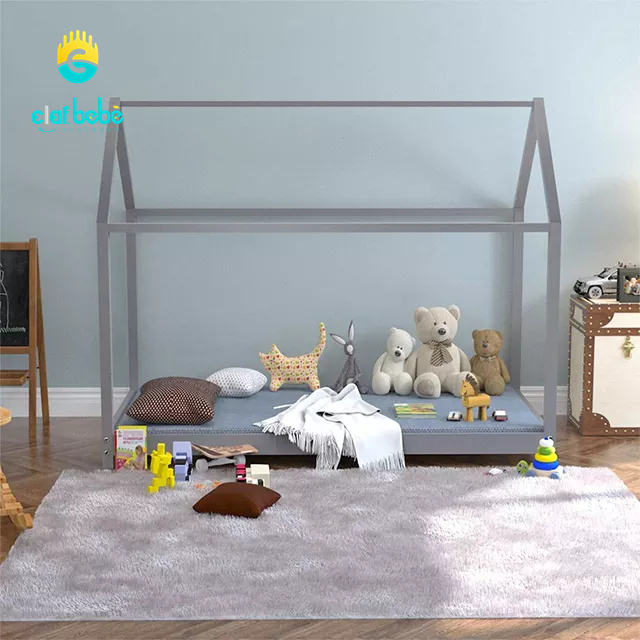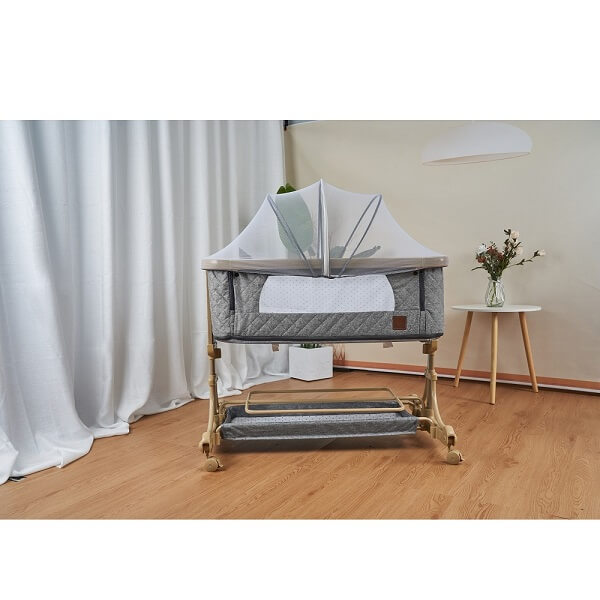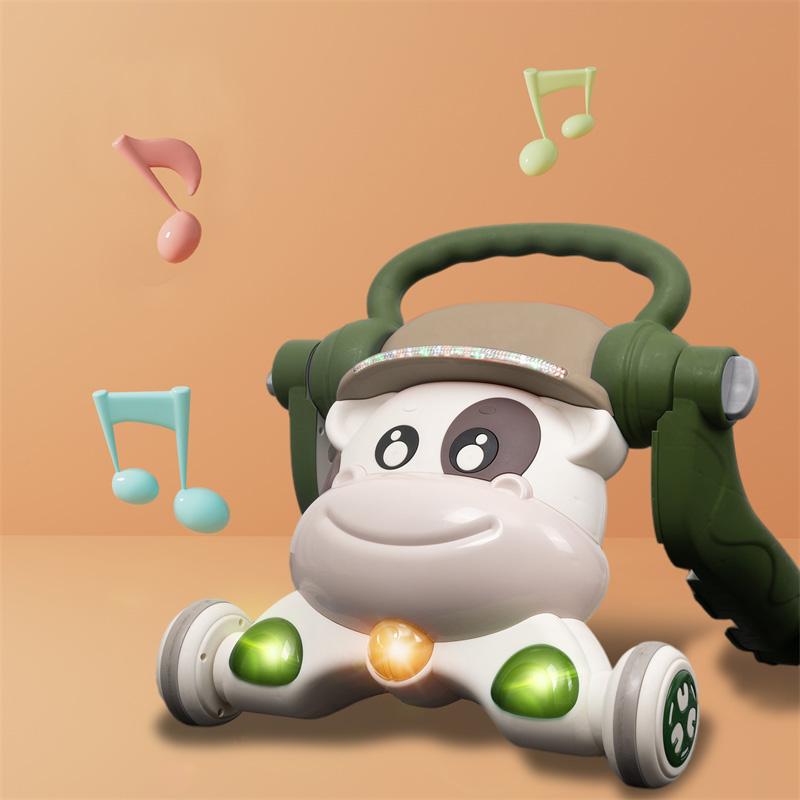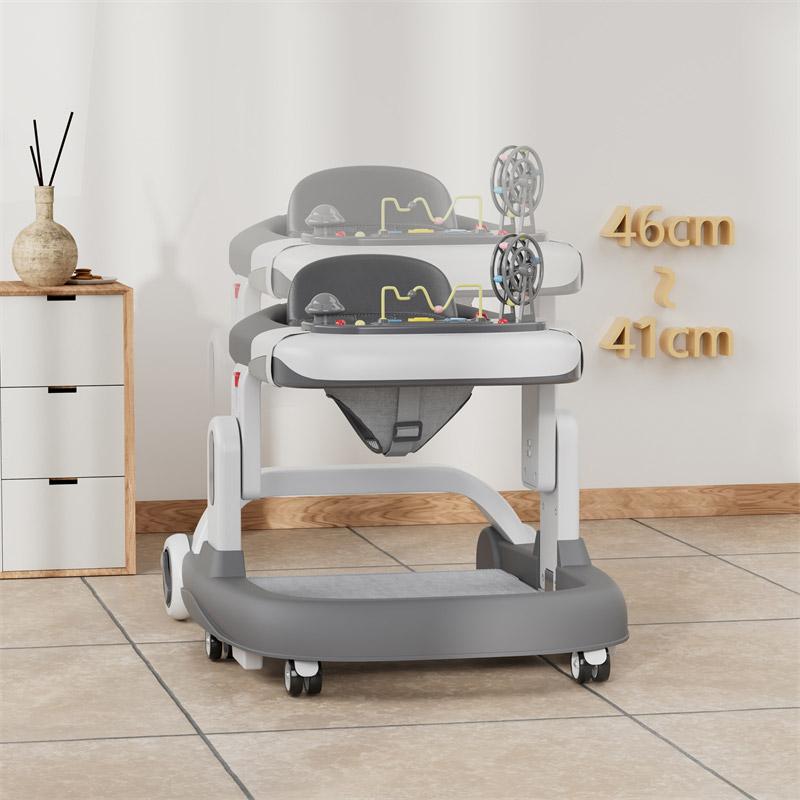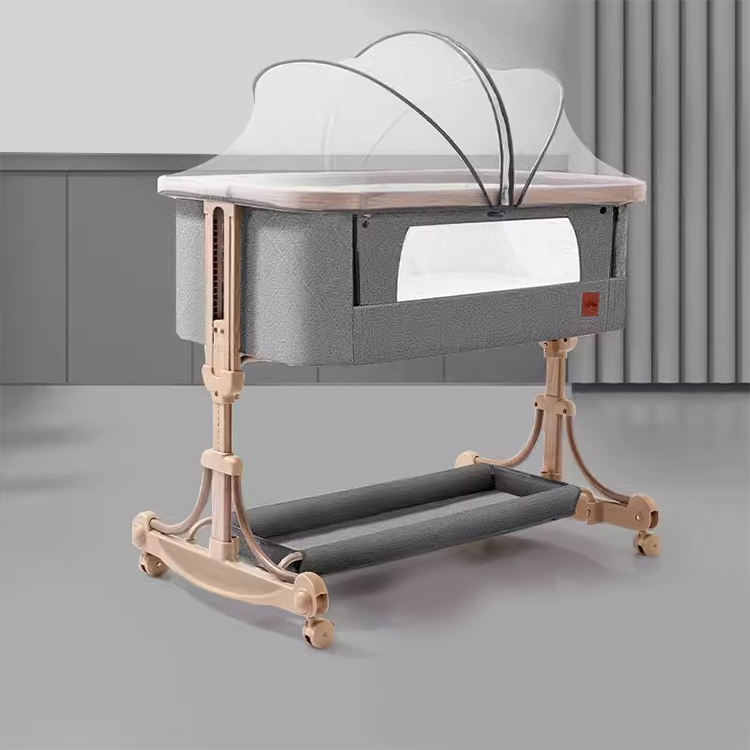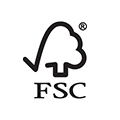If you are raising a young child, you will find it very convenient to have a learning tower. It allows your little one to temporarily stop clinging to you and do something independently.
Gaining motor skills is key to a child’s development. By frequently using learning towers, babies gradually become independent. For example, they can learn to access the bathroom sink and brush their teeth without the caregiver’s help.
Here is a guide on identifying if your baby is ready for a learning tower.
Importance of Early Childhood Independence
Early childhood independence is important for several reasons. One of them is that it helps toddlers gain essential life skills. Learning to dress, brush their teeth, and eat by themselves is important as they gradually learn to care for themselves and their hygiene.
Early childhood independence also helps babies to build up their confidence and self-esteem. When they manage simple things such as getting their toys from the kitchen counter or their caregiver’s car keys, they feel proud and gain faith in their abilities.
This helps improve their confidence and motivates them to try out other challenging tasks in the future. They will also outgrow the urge to ask their parents or siblings for help.
The purpose of the toddler tower is to help young children complete some things independently. They can climb up the learning tower, break the height limit, and complete things that seem impossible for them to do by themselves.
Definition and Key Features of Learning Tower
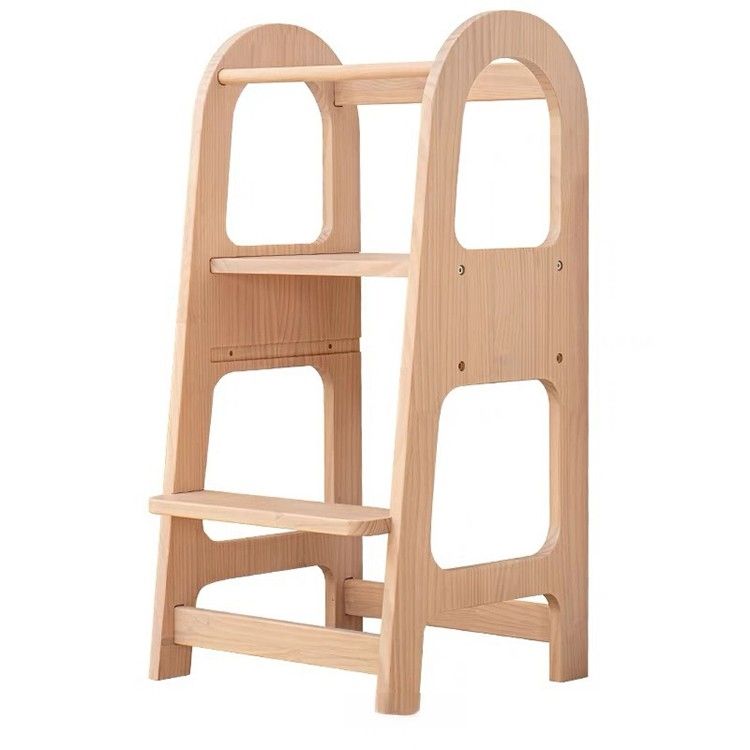
Definition
Learning towers are pieces of baby furniture designed to raise kids to a countertop height and enable them to participate in daily activities like cooking, kneading dough, playing, cleaning utensils or even doodling on writing pads.
They help toddlers bond with parents, caregivers, or older siblings as they feel included. A learning tower’s design consists of a sturdy adjustable platform with a wide sturdy base with steps in a ladder-like formation. It also has guardrails for safety.
Caractéristiques principales
- Wide Stable Base: The wide base keeps the toddler tower stable and prevents it from tipping over when your toddler is on it. It also allows the baby to stand on the highest step or adjustable level without the caregiver or parent worrying.
- Safety Guardrails: Most learning towers have railings or a simple barrier at the back to prevent the baby from falling backward and injuring themselves. The guardrails also support the toddlers as they climb the tower. The gaps between the rails should be evenly placed to prevent the baby from falling through.
- Steps: A learning tower should have steps to help elevate the baby to a higher height. The steps should have non-slip surfaces to prevent the baby from slipping and falling. Additionally, steps should be designed for toddlers’ small-sized feet.
- Hauteur réglable: Learning towers have adjustable platforms that allow babies to use them as they grow. Babies grow faster, the adjustable height feature allows it to accommodate their growth.
- Easy to assemble: Learning towers are usually easy to assemble and parents or caregivers can easily do it with the help of the manufacturer’s manual. They have easy-to-assemble components that can be fitted without using complicated tools. Some learning towers also have a foldable design, so parents can easily collapse and store them when toddlers are not using them.
Benefits of Using a Learning Tower
They Ensure Your Baby’s Safety
Child safety is the most important priority of parents. kitchen helpers are stable due to their wide base. They also have guard rails at the back to prevent the baby from falling when they engage in activities.
The non-slip steps also prevent the baby from slipping and falling when they climb the learning tower.
They Help Your Baby Become Independent
Learning towers help babies gain wider access to their environment. When they reach the countertop and other elevated places such as sinks, they observe how adults and older siblings carry out tasks and learn how to do them.
They slowly learn to brush their teeth, use a spoon, and clean countertops when they spill drinks.
They Help Toddlers Bond With Their Parents/Caregivers
Toddlers usually feel left peering up at their parents or older siblings carrying out tasks on the kitchen counter which they cannot participate in. Learning towers allow them to access that world and join in on those activities.
The activities become core memories and foundations of good relationships between children and parents.
Helps the Baby Develop their Motor Skills
Climbing the learning tower requires toddlers to use both their hands and feet. The hands hold on the rails for support as the feet maneuver the steps. That helps the baby improve their motor skills and coordination.
Toddlers also engage in activities like stirring and mixing food ingredients further improving their motor skills.
Improves Toddler’s Confidence and Self-Esteem
When children accomplish simple tasks such as whisking an egg or pouring themselves a glass of water, they feel a greater sense of accomplishment. That feeling builds their confidence and encourages them to attempt more challenging tasks.
It also builds their self-belief as they become aware they can do certain tasks without their parent’s help.
Age Appropriateness for Using Learning Towers
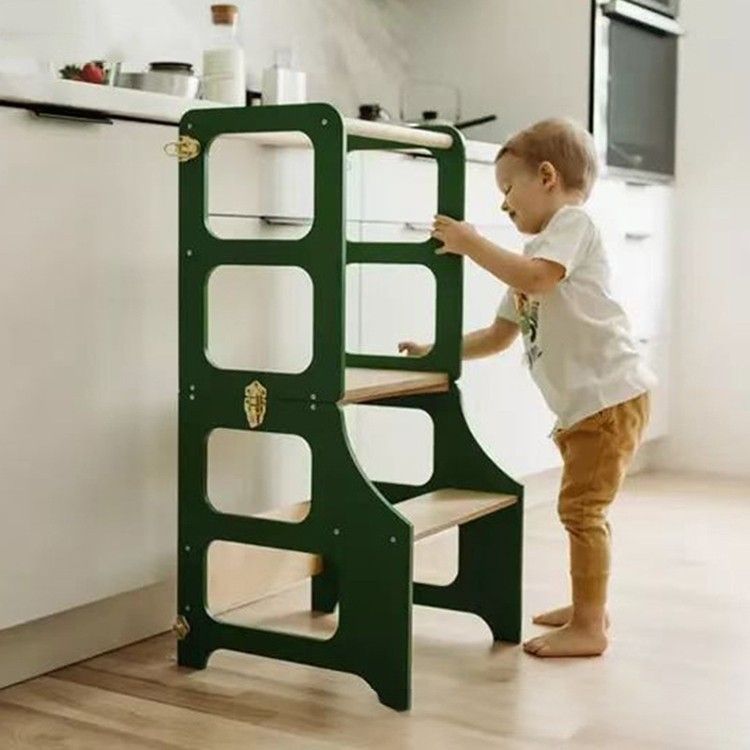
Parents often inquire about the correct age for their babies to use learning towers. They want to help their children become independent but want them to be fully ready first. The appropriate stage to introduce your baby to the Learning tower is when they can stand independently and comprehend simple instructions from their parents/caregivers.
That typically happens when the baby is between 1.5 to 2 years old. However, children develop at different paces and the age may vary from child to child. Therefore, when your baby can stand independently or with little support, purchase a learning tower from a reliable manufacturer and bring it home.
Most parents worry that the toddler tower will only be used briefly but that is not the case. Children can use learning towers up to the age of 6. Initially, they use it to observe, then to participate actively, and finally, to access higher areas.
Signs Your Little One is Ready for a Learning Tower
They Can Stand Independently
When your baby starts standing independently and can cruise around the house for a few steps without seeking support, they are ready for a walking tower.
Therefore, they need to balance while carrying out the tasks. However, during the first few days, they can lean on the guard rails for support as they are not used to the learning tower. Additionally, give them lighter tasks as they will tire out easily. Allow them to observe and learn as you work.
They Attempt to Climb on Chairs, Beds or Tables
When your baby starts to climb chairs and similar low-lying surfaces, it is a clear sign that they are ready for the learning tower. Climbing requires the baby to use their hands and legs coordinately.
The same skill is needed on the learning tower, especially during climbing. The baby needs to place their feet on the steps while hoisting themselves up with their hands. Climbing attempts indicate that the baby is active and you can get them to participate in your activities straight away. Let them press the blend button as you blend juice for them.
They Respond to Simple and Clear Instructions
Babies need to understand simple instructions before they can use the learning tower. Give them simple errands, send them to bring your phone from the table and when they manage it they are ready for the learning tower.
While the kitchen helper and participating in activities such as cooking, you will be issuing instructions such as” Stir the soup slowly” or ‘Hand me a spoon”. Stay close throughout the tasks to protect them from harm.
They Start Showing Interest In Activities
Babies can show interest in activities by following around as you work, tugging at your legs, or attempting to do the activities themselves. For example, your child may not be able to access the kitchen sink but they may try to place their plate there after eating. That is a clear sign that they are ready for the kitchen helper.
Your baby might refuse your help to brush their teeth or ask you to lift them as they wash their hands at the sink. Get a quality learning tower and help them become more independent.
Potential Challenges and How to Overcome Them
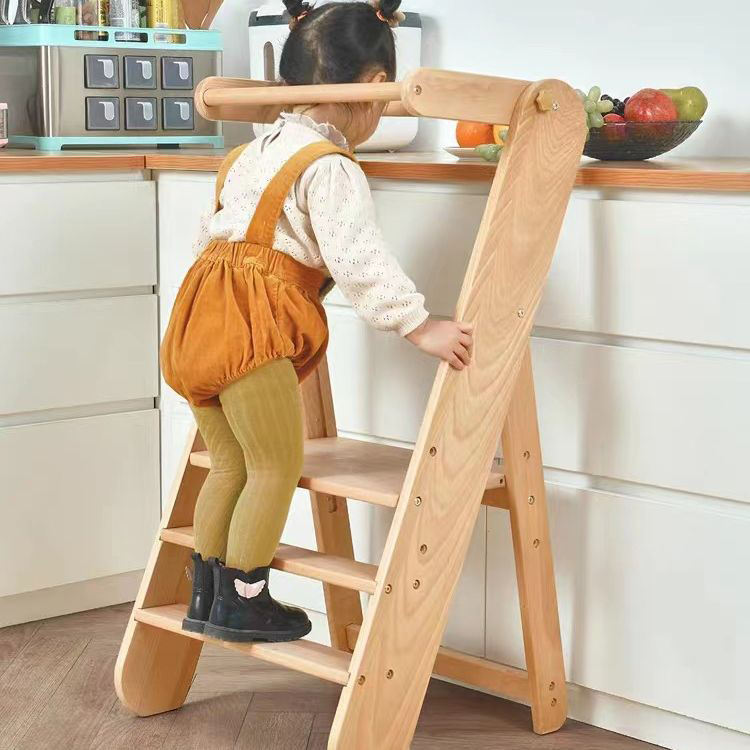
Safety Concerns and Precautions
Like any other baby product, learning towers pose some safety concerns. It allows babies to reach dangerous and harmful items that were previously inaccessible.
With the help of a learning tower, they can access items such as knives on the kitchen counter. They can also touch hot items on the stove and get burnt.
To prevent that, keep the dangerous and harmful items out of reach of children. Lock all the knives in a cabinet. Keep hot things away from the counter and be watchful when participating in activities such as cooking to prevent them from reaching out and touching the stove.
Always assemble the learning tower correctly before your baby gets on it, Monitor them when they use it, and store it away when your toddler is not using it.
Space Constraints in Small Kitchens
Some parents may want to get learning towers for their babies but are held back by constraints such as small kitchens. Parents should get a foldable learning tower for their babies to solve the space issue.
Parents can bring out the toddler tower, allow their babies to participate in cooking and cleaning utensils, and learn hands-on cooking and motor and skill development. The foldable tower should be easy to assemble and disassemble making it easy for toddlers to use when needed.
The learning tower should be lightweight due to frequent moving and storage. In the collapsible form, the Learning tower is compact and can be stored anywhere including on top of dressers and you can save on storage space.
Managing Multiple Children
Parents of multiple toddlers harbor worries and concerns that their kids will not benefit from using learning towers. Children hate being left out and toddlers even more so. Therefore, when one kid uses the tower to help the parents cook or carry out household chores, the other baby(s) would also want to do so.
To get around the issue, a parent/caregiver might have to buy two or more learning towers but that might be too expensive for the parent and will consume a lot of space. However, the parent can get an adjustable kids tower.
Assign the toddlers simple and different chores. The younger one can help you prepare and cook meals and the older one helps to wash the utensils afterwards. The adjustable learning tower can allow each toddler to carry out their task separately.
Alternative Uses of a Learning Tower
1. An Art Station
The older children can use the learning tower as an art station. They can place paintbrushes and pain on a lower rung and an easel on a higher step. The baby can then paint on the easel and improve their art skills.
Place a polythene cover around the learning tower to prevent permanent stains on your floor or rug. That will give your child the freedom to explore their artistry and relieve you of unnecessary stress about how you will clean the playroom or the kids’ bedroom where the learning tower is situated.
2. A Step Ladder
The older kids can use the learning tower as a step ladder. Except for the hinges, step ladders have a design similar to a learning tower’s. They both have steps that go upwards, non-slip steps, and sturdy bases that keep them stable as kids or older people use them to reach elevated heights.
Both of them are portable and can be easily moved. The major difference is that learning towers have guardrails preventing children from falling. A child below 6 can use the learning tower to reach higher and help their parents paint their rooms, hang their artwork on the walls, or hang balloons during parties.
3. Storage Area
Learning towers can alternatively be used as a storage area. Arrange your kids’ books on the steps. They will act as shelves and you can organize them by instructing your children to place their books on different steps for convenience.
Apart from books, the children can also store their toys instead of leaving them lying on the floor throughout the house. Instruct the children to place the toys on the tower when they are tired of playing or need to sleep. The exercise can help develop their organizational skills and they can grow up into tidy adults.
Conclusion
Learning towers are very beneficial to babies as they assist in their development.
However, they will not work as intended if introduced to babies too early. Wait until your baby can stand independently. They do not have to walk first as they will remain stationary on the tower. Standing balance is the key factor.
Contactez-nous for further consultations about learning towers!

